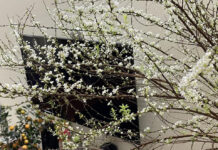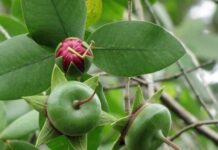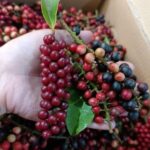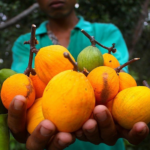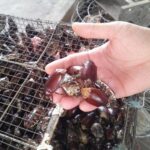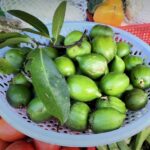Once upon a time, during the fruiting season, the hillsides would glow crimson with the ripe fruits of the wild forest litchi trees, their fallen treasures left untouched. Today, the scene has transformed. Clusters of these vibrant fruits are carefully harvested and displayed along the roadsides, enticing curious passersby to sample their unique flavor. This humble countryside treat now commands a price of up to $3.50 per kilogram, becoming a sought-after specialty for urban dwellers and tourists visiting An Giang.
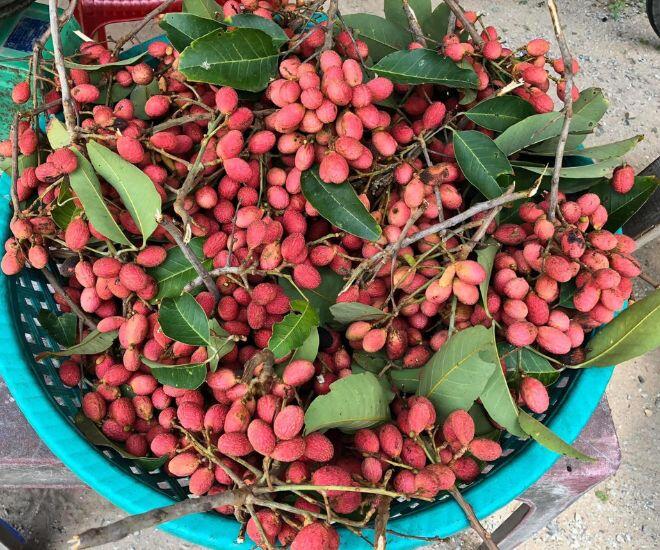
Known locally as “trái trường” or wild forest litchi, these trees thrive naturally in the untamed forests of the Seven Mountains region. Untended and uncultivated, they soar to heights of dozens of meters, bearing abundant fruit each summer. In the past, these fruits were casually plucked by forest wanderers or offered as simple snacks to children. Though their ripe, red fruits carpeted the ground, their wild nature kept them from being highly valued.
However, in recent years, as adventure tourism and local culinary exploration have gained popularity, the wild forest litchi has experienced a remarkable resurgence. Tourists, especially young travelers, eagerly seek out this fruit to savor its distinctive blend of familiar and exotic flavors from the Western highlands. As a result, locals have begun harvesting and selling it more extensively, transforming it from a forgotten wild fruit into a significant source of income for the people of Tri Tôn.
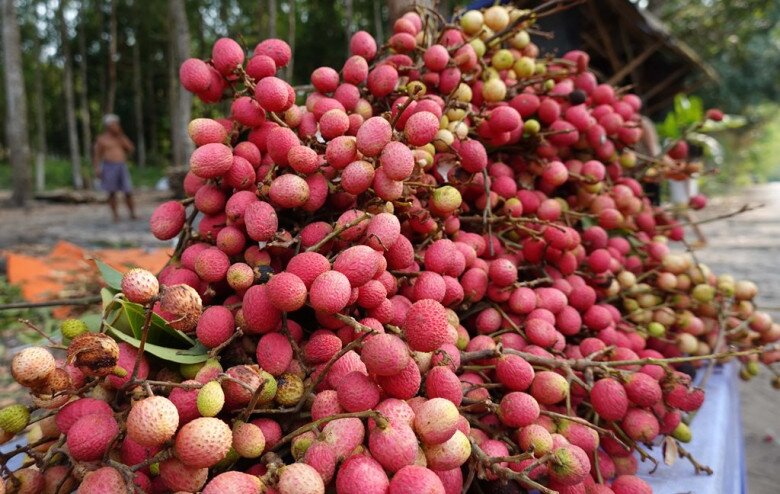
The wild forest litchi is petite, about one-third the size of a regular litchi. Its thin skin ranges from deep red to pale pink, encasing translucent, tender, and juicy flesh. When peeled, it releases a subtle, soothing fragrance—gentle and refreshing, never overpowering.
What truly captivates is its signature tangy sweetness. Unlike the sharp acidity of citrus or the tartness of tamarind, this fruit offers a mild sourness that lingers on the tongue, giving way to a cool, sweet aftertaste. This intriguing contrast often surprises first-time tasters, leaving them both curious and eager for more.
Beyond the common red variety, some trees bear fruits with ivory-white skin that blushes faintly when ripe. Despite the color difference, the flavor remains consistent: a delicate balance of tartness, sweetness, and the faint, forest-fresh aroma.

The wild forest litchi season begins in April and lasts about two months. Harvesting is no easy feat, as the trees grow tall and wild. Locals often climb high or cut entire branches to gather the fruit. Despite the labor-intensive and risky process, the fruit’s growing market value motivates many to brave the heights for a timely harvest.
Remarkably, these trees require no fertilizers or care, yet they bear fruit reliably each year. Some ancient trees, their bark weathered and moss-covered, still produce heavy clusters of bright red fruits that shimmer in the sunlight.
Currently, wild forest litchis fetch between $2.70 and $3.50 per kilogram, depending on the season. During peak season, visitors to An Giang eagerly purchase several kilograms as souvenirs. For many, this fruit is more than a novelty—it embodies the untamed beauty and richness of the Seven Mountains region.
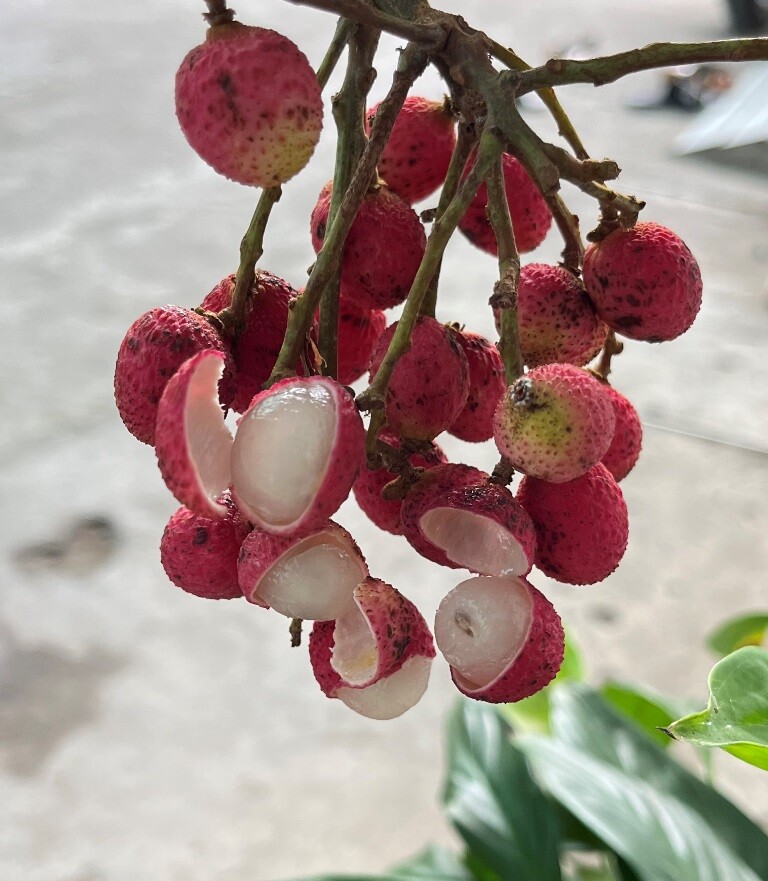
Like other local fruits, wild forest litchis can be enjoyed fresh or transformed into delightful treats. Street food enthusiasts relish them tossed with salt and chili, a perfect blend of tangy, spicy, and savory flavors. Those with a creative touch preserve them in sugar, make jams, or pair them with a sprinkle of pepper and lime for added zest.
Local vendors have also innovated with wild forest litchi juice—a refreshing blend of sweet and tangy flavors, mixed with sugar and ice, ideal for cooling off on a hot Western day. For visitors, a single sip is enough to evoke the essence of the forest, both exotic and enchanting.
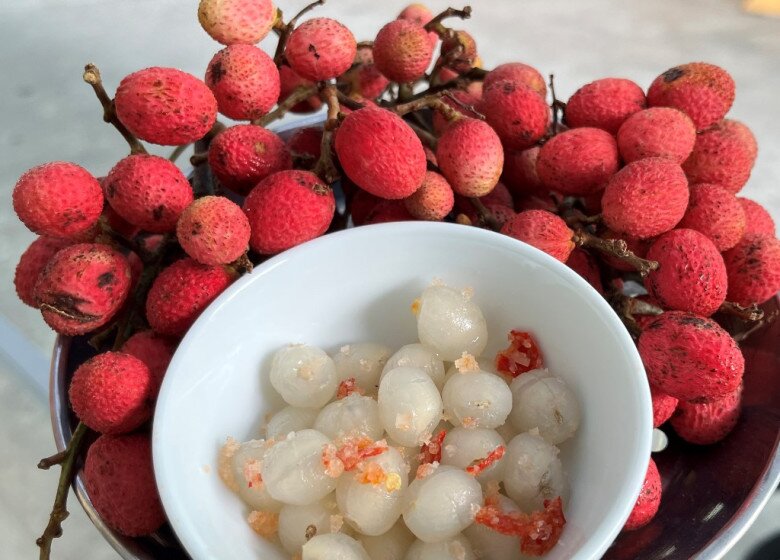
Beyond its unique flavor, the wild forest litchi has become a vital livelihood for the people of the Seven Mountains. During harvest season, roadside fruit stalls bustle with activity, attracting both tourists and locals. Many families supplement their income by harvesting and selling this fruit.
By purchasing wild forest litchis, visitors not only enjoy a unique delicacy but also contribute to the region’s tourism growth. The warmth and hospitality of Tri Tôn’s residents, combined with natural treasures like this fruit, create a distinct charm that draws people to this land.
Once overlooked, the wild forest litchi has become a symbol of revival—not just for the Seven Mountains’ natural heritage, but also for the cherished values of rural life. In our fast-paced world, this fruit reminds us that true specialties often lie in simplicity, authenticity, and the pure essence of An Giang’s forests.
The Ultimate Tropical Escape: Discover the Best of Both Worlds in the Newly Merged Province
The merger of Kien Giang and An Giang provinces will create a tourism powerhouse, boasting a plethora of renowned and alluring attractions. The new province will be a haven for travelers seeking diverse and captivating experiences. From the breathtaking beauty of Phu Quoc Island to the enigmatic Nam Du and Hai Tac archipelagos, and the majestic Cam and Sam mountains, the region offers a wealth of natural wonders and cultural delights.








